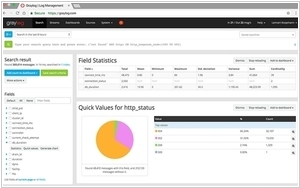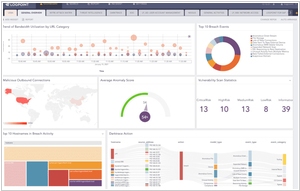Graylog vs Logpoint
July 31, 2023 | Author: Michael Stromann
See also:
Top 10 SIEM software
Top 10 SIEM software
Graylog and Logpoint are both popular log management and security information and event management (SIEM) solutions, but they have distinct differences in their features and capabilities. Graylog is an open-source platform that excels in log aggregation, analysis, and visualization. It offers a robust search functionality and a user-friendly web interface, making it ideal for organizations seeking an easy-to-use, cost-effective solution for log management. On the other hand, Logpoint is a commercial SIEM platform that provides advanced security analytics, threat detection, and compliance management. It offers a wide range of pre-built integrations and correlation rules, enabling organizations to quickly detect and respond to security incidents. While Graylog is more focused on log management, Logpoint provides a broader range of security-specific features for organizations with extensive security monitoring needs.
One key difference between Graylog and Logpoint is their pricing models. Graylog, being open-source, is generally more cost-effective for organizations since it does not require licensing fees. However, it may require more effort to set up, maintain, and customize according to specific requirements. On the other hand, Logpoint is a commercial product and typically comes with licensing costs, but it often offers additional support and services, making it a viable option for organizations with higher budgets and complex security needs.
Furthermore, the user experience and ease of use can differ between Graylog and Logpoint. Graylog's user interface is well-regarded for its simplicity and ease of navigation, making it accessible to users with various levels of technical expertise. Logpoint, as a commercial product, usually invests more in user experience and provides a polished interface with comprehensive dashboards and reporting capabilities. This can be advantageous for security teams that need to quickly access critical information and insights without the need for extensive training. In summary, while both Graylog and Logpoint serve essential log management and SIEM purposes, Graylog is often favored for its simplicity and affordability, while Logpoint shines in offering advanced security analytics and features, with added costs and a focus on user experience. Organizations should assess their specific needs and budget constraints to determine which solution best fits their requirements.
See also: Top 10 SIEM software
One key difference between Graylog and Logpoint is their pricing models. Graylog, being open-source, is generally more cost-effective for organizations since it does not require licensing fees. However, it may require more effort to set up, maintain, and customize according to specific requirements. On the other hand, Logpoint is a commercial product and typically comes with licensing costs, but it often offers additional support and services, making it a viable option for organizations with higher budgets and complex security needs.
Furthermore, the user experience and ease of use can differ between Graylog and Logpoint. Graylog's user interface is well-regarded for its simplicity and ease of navigation, making it accessible to users with various levels of technical expertise. Logpoint, as a commercial product, usually invests more in user experience and provides a polished interface with comprehensive dashboards and reporting capabilities. This can be advantageous for security teams that need to quickly access critical information and insights without the need for extensive training. In summary, while both Graylog and Logpoint serve essential log management and SIEM purposes, Graylog is often favored for its simplicity and affordability, while Logpoint shines in offering advanced security analytics and features, with added costs and a focus on user experience. Organizations should assess their specific needs and budget constraints to determine which solution best fits their requirements.
See also: Top 10 SIEM software





